
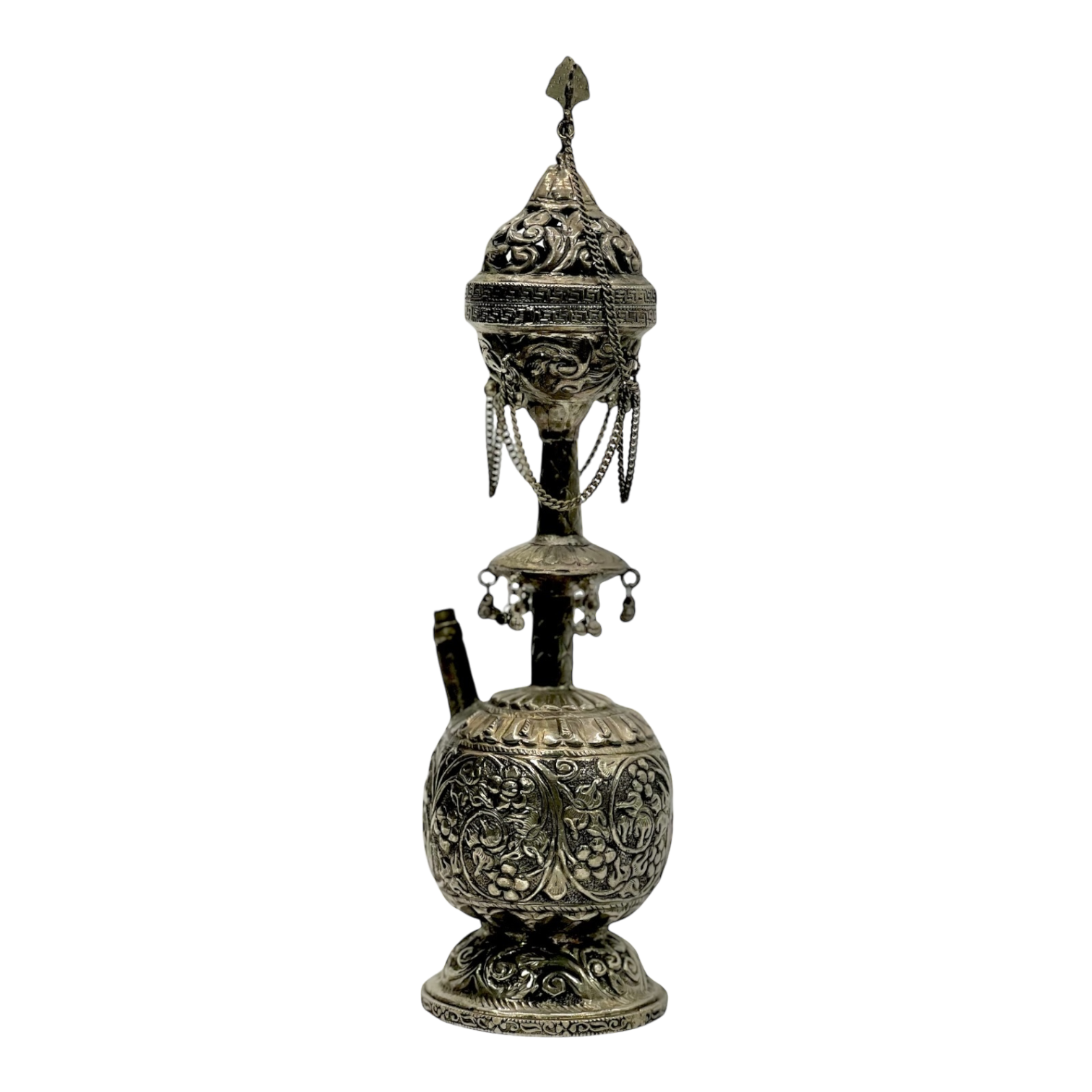
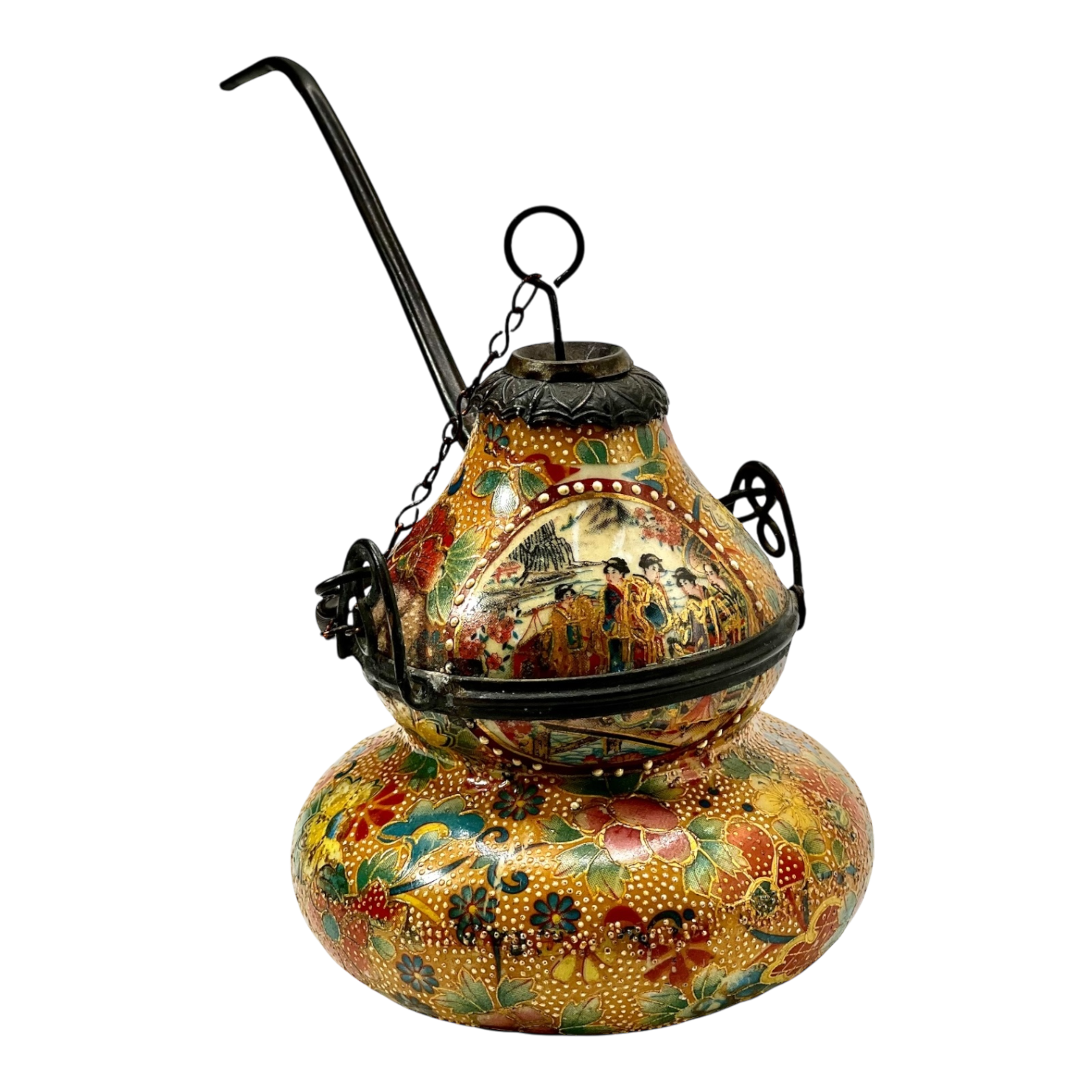
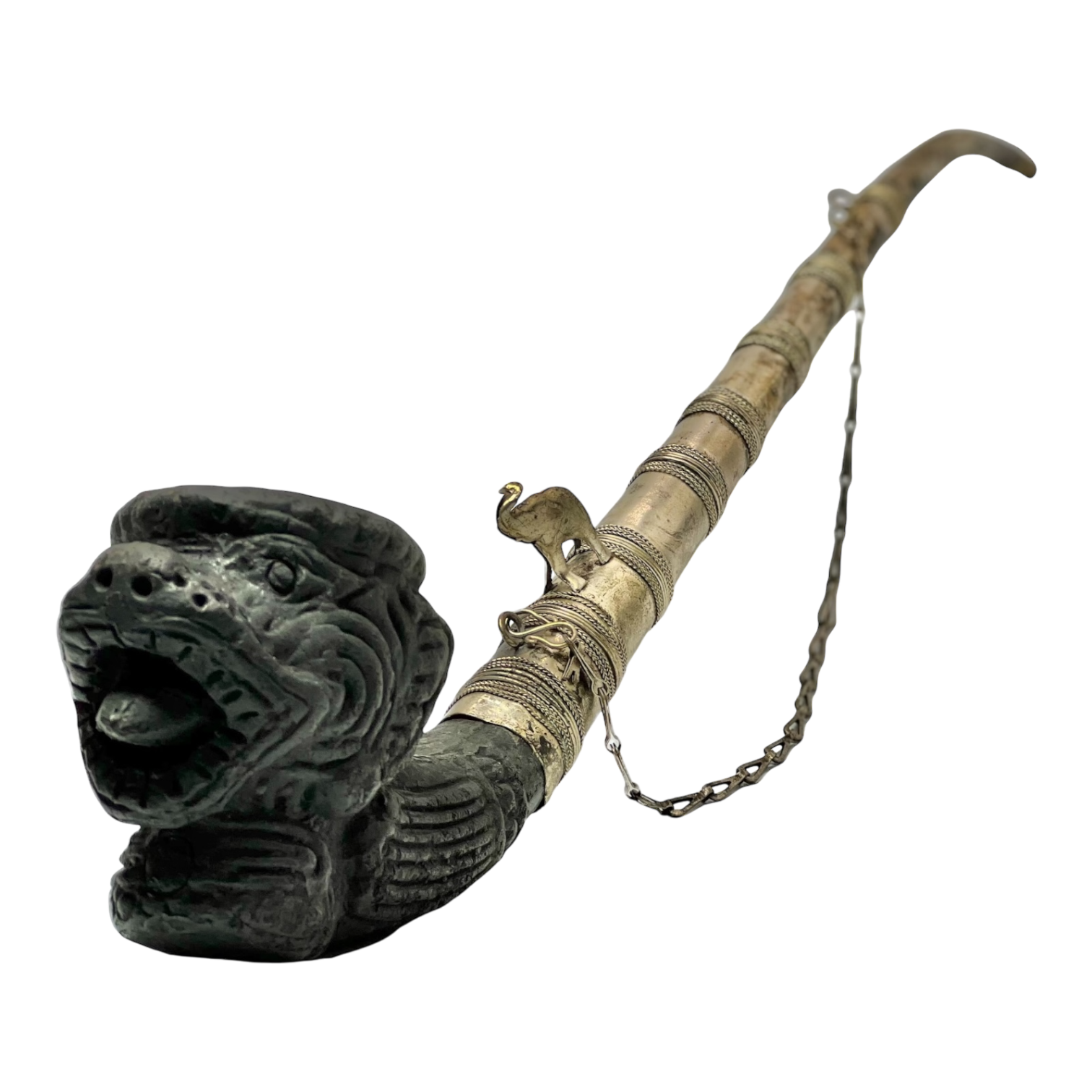
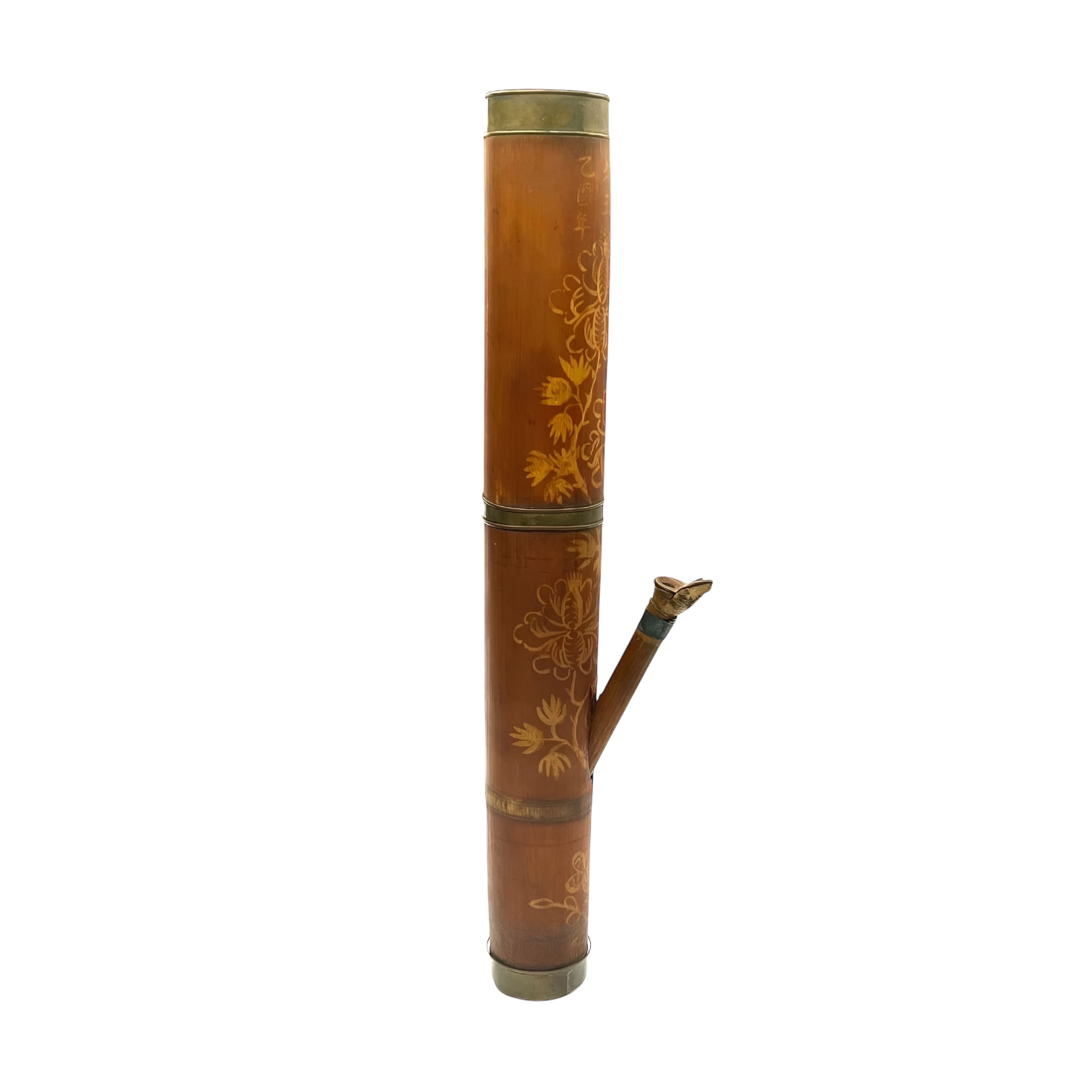
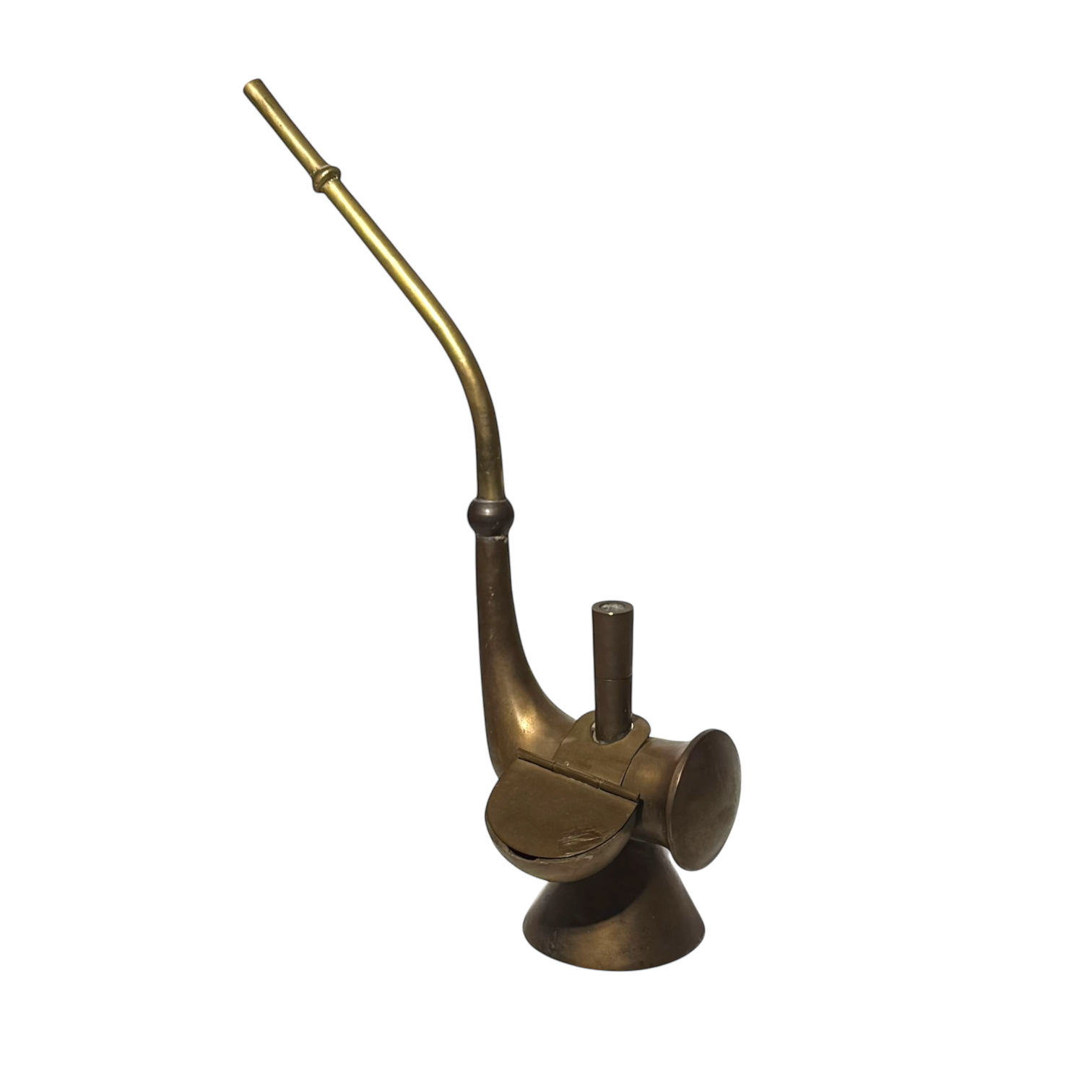
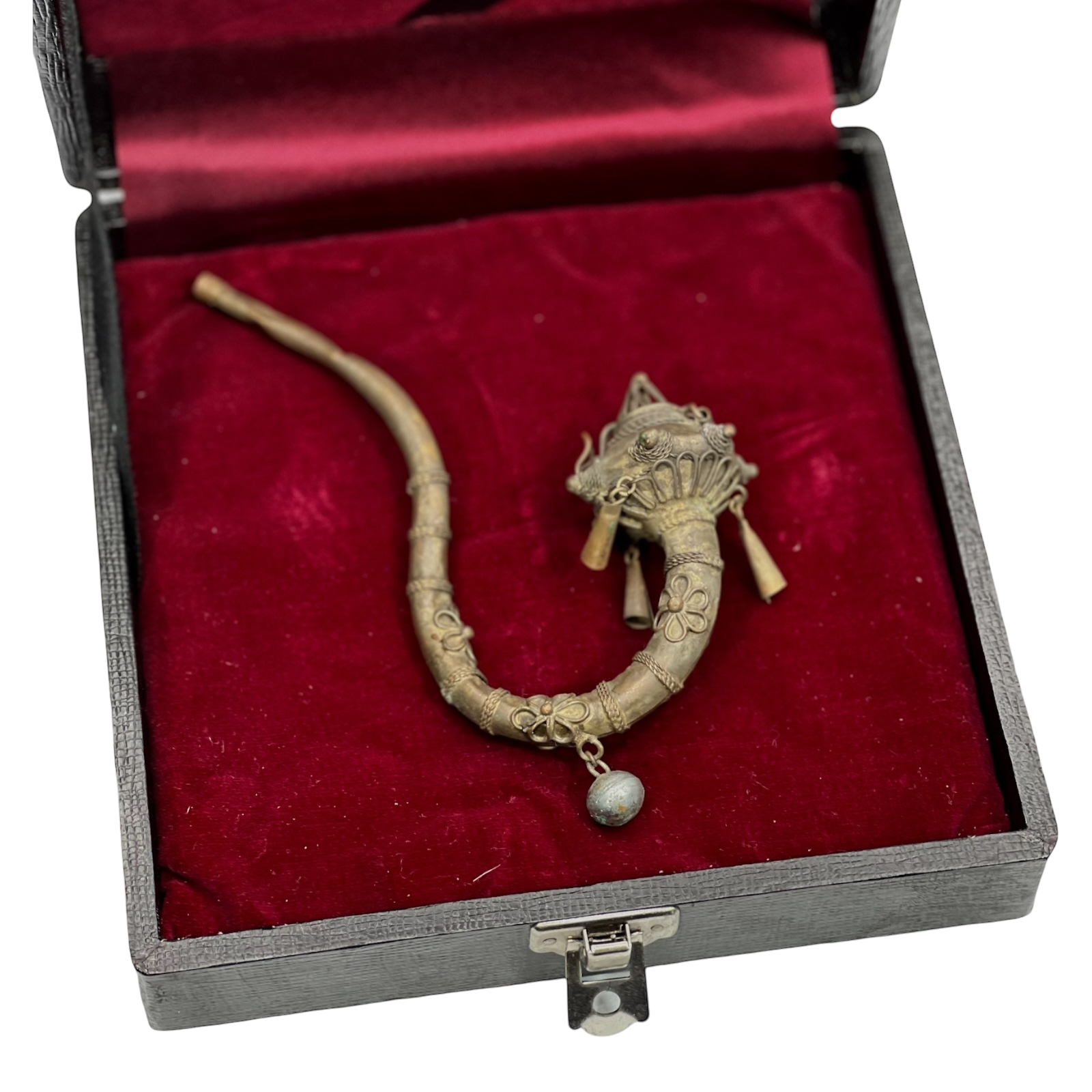
This late 1800s silver-plated copper hookah from India is a masterpiece of craftsmanship, luxury, and symbolism. Featuring intricate floral carvings, a dome-like top, dangling chains, and a prominently carved turkey, it blends artistry with function. The turkey motif represents abundance and wealth, aligning with the elite lifestyle of hookah smoking in royal courts and high society gatherings.
This 1800s Japanese porcelain opium pipe is a stunning testament to luxury and smoking culture. The hand-painted micro-mural depicts a group of women in elegant garb by the sea, possibly representing geishas or noblewomen enjoying leisure along the shoreline. This serene imagery, framed by intricate floral motifs and gold accents, embodies the Japanese themes of tranquility, beauty, and fleeting moments. The metal stem and bowl suggest durability, likely for refined opium rituals among the elite.
This 19th-century Thai dragon silver-stem pipe is a breathtaking artifact of spiritual symbolism and masterful craftsmanship. The stone-carved dragon head, fierce and expressive, represents strength, protection, and wisdom, deeply rooted in Thai mythology. Flowing from this powerful figure is a silver stem, adorned with intricate elephant motifs, a tribute to prosperity, endurance, and royal significance in Thai culture. A delicate chain attachment suggests this was a pipe of distinction, possibly used by nobility or spiritual leaders.
This 1940s bamboo water pipe is a rare wartime relic, brought back from China by a World War II army veteran. Made entirely from bamboo, including the bowl and downstem, it reflects the traditional craftsmanship of Chinese smoking culture. The engraved floral motifs symbolize peace and longevity, contrasting with the wartime history behind its journey. A visible split down its side serves as a testament to its age and the countless stories it carries.
This late 1800s to early 1900s solid brass water hookah is a rare Chinese artifact, uniquely shaped like a saxophone, an instrument patented in 1846 during the rise of industrial innovation. Crafted by skilled Chinese metalworkers, it blends traditional smoking culture with Western-inspired design. The attached ashtray/storage jar provided convenience for tobacco or opium use, while the brass body ensured durability. Likely commissioned by an elite merchant, aristocrat, or artist, this hookah reflects China’s embrace of industrial influences and luxury craftsmanship.
This early 17th-century metal pipe, found in Jerusalem, Israel, reflects elite craftsmanship. Made from a light metal, it features soldered floral patterns and hanging ornaments, symbolizing prosperity and refinement. The curved shape and intricate details suggest Ottoman or Sephardic Jewish influences, likely crafted by a master artisan for a wealthy merchant, noble, or scholar. The hanging bells may have added a ceremonial element, making smoking a social or spiritual ritual.
